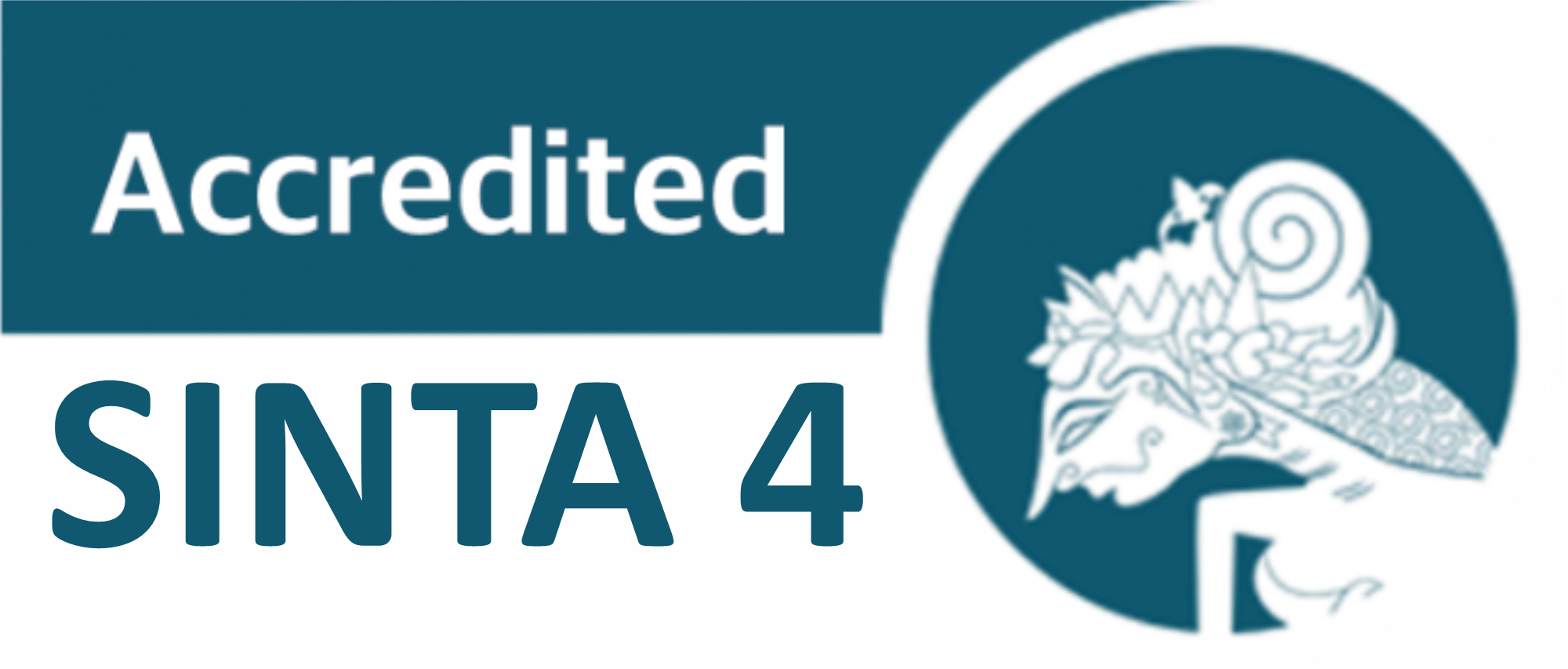Sandung as a Form of an Artistic Expression for The Kaharingan Hindu Community in Palangkaraya City
DOI:
https://doi.org/10.24114/gr.v14i1.59659Keywords:
Sandung, Expression, Kaharingan, Hindu, PalangkarayaAbstract
This research has problems related to understanding the form of brisket. Basically, Sandung is well known to the Kaharngan Hindu community in Palangkaraya City, however, the forms of Sandung are still rarely understood. It needs to be dissected and analyzed into writing so that in the future it can be understood by the wider community. The urgency of this research is to fill the gap in previous research with current facts in the field (das sein) regarding the correlation between the forms of Sandung presented in artistic expressions for the Hindu community in Palangkaraya city. This research aims to examine Sandung as an artistic expression for the Kaharngan Hindu community in Palangkaraya city. This research uses a qualitative method with a phenomenological approach using data collection techniques in the form of observation, interviews, documentation and literature review relevant to this research. This research uses A.A.M.'s aesthetic theory of Djelantik to dissect the shape of Sandung so that it can be studied in depth to create a complete and in-depth article about Sandung. The results of the research found that the shape, weight and appearance of the Sandung are very aesthetic. It is necessary to examine the actual shape and arrangement based on facts in the field, the atmosphere, ideas and messages conveyed through the shape of the Sandung, and what talents, skills, facilities and media are used. presented in the form of Sandung. Based on the results of the analysis, this research is expected to contribute knowledge in the form of Sandung to the Kaharngan Hindu community in the city of Palangkaraya.References
Agung, A., Bagus, N., Yudha, K., & Si, M. (2021). Pembangunan industri perfilman Bali dengan konsep bekerja tulus ikhlas khas kearifan Bali yang bernilai ekonomis. Online) SENADA, 4. https://doi.org/https://eprosiding.idbbali.ac.id/index.php/senada/article/view/580
Agung, L., Kartasudjana, T., & Permana, A. W. (2021). Estetika nusantara dalam karakter GIM Lokapala. Gorga : Jurnal Seni Rupa, 10(2), 473. https://doi.org/10.24114/gr.v10i2.28556
Agus, A. A. (2011). Wujud garapan baladhika. Artikel Bulan September (2011), 2(9), 1-1.
Arsitektur, A. J. T. (2019). Koeksistensi Alam Dan Budaya Dalam Arsitektur. https://doi.org/10.31219/osf.io/9zsmj
Budiman, A., Wulandari, A., & Sukmawati, N. (2022). Selamatan Bayi Versi Orang Jawa: Kajian Linguistik Antropologis. SASDAYA Gadjah Mada Journal of Humanities, 6(2), 117. https://doi.org/10.22146/sasdaya.6114
Citrowati, E., & Mayar, F. 2019. Strategi pengembangan bakat seni anak usia dini. https://doi.org/https://doi.org/10.31004/jptam.v3i3.343
Gunada, I. W. A. (2020). Ajaran agama Hindu sebagai inspirasi penciptaan karya seni lukis tradisional Bali. Gorga : Jurnal Seni Rupa, 9(1), 158. https://doi.org/10.24114/gr.v9i1.18492
Indira, H., & Pratiwi, S. (2019). The Existence of Performance Art of Sandur in the Era Globalization. Arts and Design Studies. https://doi.org/10.7176/ads/71-04
Irawati, E. (2013). Kreativitas seniman tingkilan Kutai Kalimantan Timur. Panggung, 23(4). https://doi.org/10.26742/panggung.v23i4.150
Jana, I. M., Sumantra, I. M., & Wiyasa, I. N. N. (2022). Topeng Paradoks Dalam Kriya Kontemporer. Segara Widya Jurnal Penelitian Seni, 10(2), 110. https://doi.org/10.31091/sw.v10i2.2429
Jordi Wicaksono, A., Zainul Arifin, M., Irvan Asyafi, F., & Nur Rachmawati, N. (2022). Wujud kebudayaan dalam naskah drama mangir karya Pramoedya Ananta Toer. Jurnal Digdaya : Pendidikan, Pengajaran Dan Kebudayaan, 1(1), 23–28. https://doi.org/https://doi.org/10.31004/jd.v1i1.7
Kurniawan, I., & Sundawa, D. (2020). “Penyadapan” as Local Cultural Values in Citizenship Education Learning. Proceedings of the 2nd Annual Civic Education Conference (ACEC 2019). https://doi.org/10.2991/assehr.k.200320.029
Kleden–Probonegoro, N. (2014). Ekspresi Karya (Seni) dan Politik Multikultural. Antropologi Indonesia, 75. https://doi.org/10.7454/ai.v0i75.3513
M. Jazuli. (2001). Kritik seni pertunjukan. Harmonia: Journal of Arts Research and Education. https://doi.org/10.15294/harmonia.v2i2.855
Naro, W. S. I., Agama Hindu Negeri Tampung Penyang Palangka Raya, I., & Jurnal, R. (2023). Pembuatan Sandung bagi umat Hindu Kaharingan di Kelurahan Kampuri Kecamatan mihing raya kab. Gunung Mas (Perspektif Hukum Hindu). Jurnal Ilmu Hukum, 6(2). https://doi.org/https://doi.org/10.33363/sd.v6i2.1134
Purwantoro, M. S. Dr. A., Afatara, N., Sasongko, S., & Munib, J. A. (2021). Penciptaan Wayang Godhonk Berbahan Limbah Daun Kering Sebagai Upaya Peningkatan Pengetahuan Seni Budaya. Texture Art and Culture Journal, 4(2), 104. https://doi.org/10.33153/texture.v4i2.3701
Sachari, A., & Sunarya, Y. Y. (2000). Tinjauan desain. Penerbit Institut Teknologi Bandung. Tanpa tahun.
Sumardjo, J. (2000). Filsafat seni. Bandung. Penerbit ITB Bandung
Suwandi, A., & Nelmira, W. (2023). Bentuk dan makna busana penghulu di Nagari Panyalaian Kecamatan X Koto Kabupaten Tanah Datar. Gorga: Jurnal Seni Rupa, 12(2). https://doi.org/https://doi.org/10.24114/gr.v12i2.50113
Wilantari, N. N. A. (2022). Sandung Ngabe Soekah Like As A Cultural Tourism Attraction Palangka Raya City. International Proceeding On Religion, Culture, Law, Education, And Hindu Studies, 1, 279-288.
Yanuartuti, S., Winarko, J., & Sasanadjati, J. D. (2021). Nilai Budaya Panji dalam Wayang Topeng Jombang dan Relevansinya pada Pendidikan Karakter. Gondang Jurnal Seni Dan Budaya, 5(2), 222. https://doi.org/10.24114/gondang.v5i2.29295
Downloads
Published
How to Cite
Issue
Section
License
Copyright (c) 2024 Made Paramarta, Wahyu Lestari

This work is licensed under a Creative Commons Attribution-ShareAlike 4.0 International License.
Copyright
Authors published in this journal agree to the following terms:
- The copyright of each article is retained by the author (s).
- The author grants the journal the first publication rights with the work simultaneously licensed under the Creative Commons Attribution License, allowing others to share the work with an acknowledgment of authorship and the initial publication in this journal.
- Authors may enter into separate additional contractual agreements for the non-exclusive distribution of published journal versions of the work (for example, posting them to institutional repositories or publishing them in a book), with acknowledgment of their initial publication in this journal.
- Authors are permitted and encouraged to post their work online (For example in the Institutional Repository or on their website) before and during the submission process, as this can lead to productive exchanges, as well as earlier and larger citations of published work.
- Articles and all related material published are distributed under a Creative Commons Attribution-ShareAlike 4.0 International License.
License
Gorga : Jurnal Seni Rupa is licensed under a Creative Commons Attribution-ShareAlike 4.0 International License.










